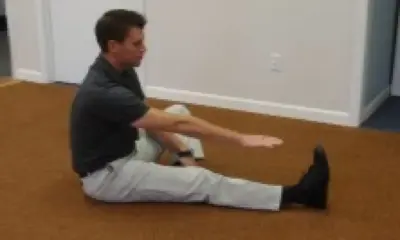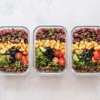Lifestyle
How to see visible abs in 6 months
Learn how to get visible abs in 6 months with this step-by-step guide focusing on calorie deficit, protein intake, strength training, and smart cardio.
Achieving visible abs in 6 months is an ambitious but attainable goal for many, especially if you commit to a disciplined approach focusing on two key areas: reducing body fat and strengthening your core muscles. It’s crucial to understand that abs are “made in the kitchen” – meaning nutrition plays a much bigger role than endless crunches. This comprehensive how-to guide will walk you through the essential steps to reveal your abdominal muscles.
How to See Visible Abs in 6 Months
Seeing visible abs isn’t about magical exercises; it’s about systematically lowering your body fat percentage while building some muscle definition in your core. Here’s a detailed plan to get you there in half a year.
Step 1: Calculate Your Calorie Deficit (The Most Crucial Step)
The fundamental principle for revealing abs is to lose the layer of fat covering them. This requires a calorie deficit, where you consume fewer calories than your body burns.
- Determine Your Maintenance Calories: Start by using an online TDEE (Total Daily Energy Expenditure) calculator to estimate how many calories you burn daily based on your age, weight, height, gender, and activity level. This is your starting point for fat loss.
- Create a Sustainable Deficit: To lose fat, you need to eat less than your maintenance calories. A safe and sustainable deficit is typically 300-500 calories below your TDEE. This allows for gradual fat loss without excessive muscle loss or metabolic slowdown.
- Track Your Intake: For the first few weeks, meticulously track everything you eat and drink using a food logging app. This helps you understand portion sizes and identify hidden calories. Consistency here is key to calorie control.
- Adjust as Needed: Your body adapts. If fat loss stalls after a few weeks, slightly reduce your calories further (e.g., another 100-200 calories) or increase your activity.
Step 2: Prioritize Protein Intake
Protein is vital when trying to get visible abs. It helps preserve muscle mass during a calorie deficit and keeps you feeling full.
- High Protein Target: Aim for 1.6 to 2.2 grams of protein per kilogram of body weight (or roughly 0.7 to 1 gram per pound of body weight).
- Spread Protein Throughout the Day: Distribute your protein intake across all your meals and snacks. This optimizes muscle protein synthesis and satiety.
- Excellent Protein Sources: Focus on lean protein sources like chicken breast, turkey, lean beef, fish, eggs, Greek yogurt, cottage cheese, and protein powder.
Step 3: Optimize Macronutrient Ratios with Smart Carb and Fat Choices
While protein is king, carbohydrates and fats are also essential for energy and hormonal health.
- Smart Carb Choices: Don’t eliminate carbohydrates entirely. They fuel your workouts and help with recovery. Focus on complex carbohydrates such as whole grains (oats, brown rice, quinoa), fruits, and vegetables. Limit refined sugars and processed carbs.
- Healthy Fats: Include sources of healthy fats for hormone production and overall well-being. Good choices include avocados, nuts, seeds, olive oil, and fatty fish. Aim for about 0.5 to 1 gram of fat per kilogram of body weight.
Step 4: Implement a Strategic Strength Training Program
While diet is crucial for fat loss, strength training builds the abdominal muscles that will become visible.
- Full Body Focus: Don’t just do endless crunches. A full-body strength training program that incorporates compound exercises (squats, deadlifts, bench press, rows, overhead press) is more effective. These movements engage your core naturally and burn more calories.
- Targeted Abdominal Work: Include 2-4 targeted ab workouts per week. Focus on exercises that hit all parts of your core:
- Rectus Abdominis (the “six-pack”): Crunches, cable crunches, leg raises, ab rollouts.
- Obliques (side abs): Russian twists, side planks, bicycle crunches.
- Transverse Abdominis (deep core stabilization): Planks, vacuum exercises.
- Progressive Overload: Just like any other muscle, your abs need to be challenged. Gradually increase the difficulty of your ab exercises by adding resistance (weights), increasing reps, or trying more challenging variations.
- Quality Over Quantity: Focus on proper form rather than rushing through reps. A few well-executed reps are better than many sloppy ones.
Step 5: Incorporate Cardio for Accelerated Fat Loss
Cardio can help accelerate fat loss, especially when combined with a calorie deficit and strength training.
- HIIT (High-Intensity Interval Training): This involves short bursts of intense exercise followed by brief recovery periods. HIIT is efficient for calorie burning and can help preserve muscle mass. Aim for 1-2 HIIT sessions per week.
- LISS (Low-Intensity Steady-State) Cardio: Activities like brisk walking, cycling, or light jogging can be done more frequently to increase your daily calorie expenditure without adding excessive stress. Aim for 2-3 LISS sessions per week.
- Don’t Overdo It: Too much cardio, especially in a significant calorie deficit, can lead to muscle loss. Find a balance that supports fat loss without hindering muscle development.
Step 6: Prioritize Sleep and Recovery
Your body needs rest to recover and build muscle.
- Aim for 7-9 Hours of Quality Sleep: Lack of sleep can increase cortisol (stress hormone), which can hinder fat loss and promote fat storage, especially around the midsection.
- Manage Stress: Chronic stress also elevates cortisol. Incorporate stress-reducing activities like meditation, yoga, or spending time in nature.
- Active Recovery: Light activities like walking or stretching on rest days can aid recovery and blood flow.
Step 7: Stay Hydrated
Water is crucial for metabolism, nutrient transport, and overall health.
- Drink Plenty of Water: Aim for at least 2-3 liters of water per day. Sometimes, thirst can be mistaken for hunger, leading to unnecessary calorie intake. Proper hydration also helps reduce water retention, which can obscure ab definition.
Step 8: Monitor Progress and Adjust Your Plan
Consistency is key, but so is adaptation.
- Track Your Progress:
- Weekly Weight Checks: Weigh yourself 1-2 times a week, at the same time and under the same conditions.
- Body Measurements: Take circumference measurements (waist, hips, etc.) every 2-4 weeks.
- Progress Photos: Take photos every 2-4 weeks. This is often the best way to see visual changes in your body composition.
- Performance Tracking: Log your strength training workouts to ensure you’re getting stronger.
- Be Patient and Adapt: If you’re not seeing progress, revisit your calorie intake and activity levels. Small adjustments over time yield the best results. Remember, visible abs at a healthy body fat percentage typically mean around 10-12% for men and 18-20% for women, but this can vary.
Step 9: Consider Supplements (Optional)
Supplements are not magic pills for visible abs, but some can support your efforts.
- Whey Protein: Convenient for hitting protein targets.
- Creatine Monohydrate: Can enhance strength and muscle performance, leading to better workouts.
- Caffeine: Can boost energy and focus for training sessions.
- Omega-3 Fatty Acids: Good for overall health and reducing inflammation.
Always remember that these are supplementary to a solid diet and exercise plan.
Step 10: Cultivate Consistency and a Positive Mindset
The journey to visible abs in 6 months requires unwavering dedication.
- Consistency is Non-Negotiable: Skip workouts, cheat meals, and inconsistent sleep will severely hamper your progress.
- Patience and Persistence: Fat loss and muscle gain take time. Don’t get discouraged by slow progress or plateaus.
- Enjoy the Process: Find activities you genuinely enjoy to make your journey sustainable.
- Consult Professionals: If you have specific health concerns or need personalized guidance, consider working with a registered dietitian or certified personal trainer.
By diligently following these steps, you will set yourself up for success in achieving visible abs within a 6-month timeframe. It’s a challenging but rewarding journey of discipline and self-improvement.



















